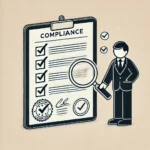In today’s complex financial landscape, banks and lending institutions face significant challenges in managing the risks associated with loan portfolios. Effective risk management strategies are crucial to mitigate potential loan losses, ensure compliance with regulatory standards, and maintain financial health. This article explores a comprehensive approach to enhance loan security and risk management, including implementing collateral security measures, loan covenants, early indicators for borrower defaults, and robust loan monitoring processes.
Implementing Collateral Security Measures
Collateral is a security measure that provides a fallback for lenders in case of borrower default. Proper valuation and management of collateral can significantly reduce the potential risks associated with loan defaults. To optimize collateral security, banks should:
- Conduct regular appraisals to ensure the collateral’s value remains adequate over the loan period.
- Diversify collateral types to spread out risk, utilizing tangible and intangible assets.
- Implement legal safeguards to ensure quick recovery of collateral in default scenarios.
- Use technology to track changes in collateral value in real time, particularly for volatile assets like securities.
Defining and Applying Loan Covenants
Loan covenants are conditions placed on borrowers to secure loan repayment and protect the lender’s interests. These covenants can be financial, such as requiring the borrower to maintain specific liquidity ratios, or operational, such as limits on further debt acquisition. The effective use of loan covenants includes:
- Tailoring covenants to match borrower risk profiles, adjusting terms based on the borrower’s financial health and industry sector.
- Including positive and negative covenants to encourage good behavior and restrict undesirable actions.
- Regularly reviewing covenant compliance, using automated systems to flag breaches, and initiating timely corrective actions.
Early Indicators of Borrower Issues
Early identification of potential borrower issues is crucial for preventing defaults. Banks should:
- Monitor financial statements and ratios for deterioration of financial health, such as decreasing cash flow or increasing debt levels.
- Set up alert systems for missed payments or covenant breaches, which can signal more profound financial difficulties.
- Engage with borrowers at signs of trouble to renegotiate terms or offer assistance before problems escalate.
Proactive Credit Risk Management Strategies
Proactive credit risk management involves anticipating potential issues before they manifest as losses. Key strategies include:
- Enhancing credit analysis techniques by incorporating more comprehensive data analysis, including predictive analytics.
- Adopting portfolio risk management tools that provide a holistic view of exposures and concentrations.
- Strengthening regulatory compliance through regular audits and adherence to evolving financial standards and practices.
Enhancing Loan Monitoring Processes
Enhanced monitoring processes help banks maintain a pulse on the creditworthiness of borrowers and the health of their loan portfolio. Effective monitoring includes:
- Regular portfolio reviews to identify sectors or borrowers with increasing risk exposure.
- Using advanced analytics to predict future trends and potential default triggers.
- Integrating market and economic factors into risk assessments to anticipate external impacts on borrowers.
Conclusion
Mastering risk management in lending is vital for financial institutions to thrive in an unpredictable economic environment. By implementing robust collateral management, defining strategic loan covenants, detecting early warning signs, refining credit risk strategies, and enhancing loan monitoring, banks can safeguard against losses while supporting borrower success.
Professionals seeking to deepen their understanding of credit and banking analysis can also consider enrolling in specialized courses like VIF Training. This course is designed to enhance skills in credit analysis, crucial for effective risk management in the banking sector.




